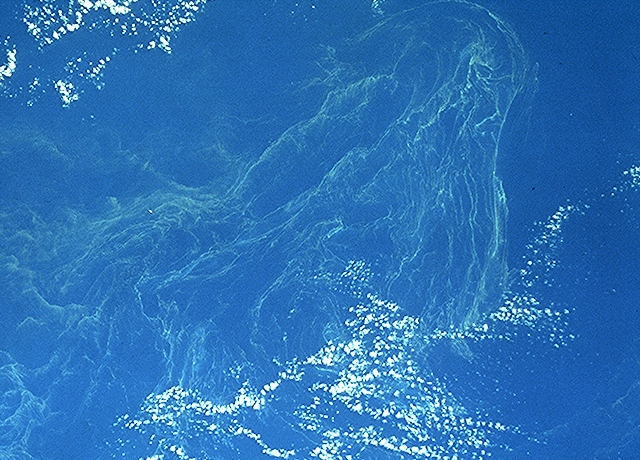
A photograph taken from the space shuttle of a bloom of Trichodesmium in the Capricorn Channel, near the Great Barrier Reef, Australia, [get date]. Colonies have floated up to form a scum on the sea surface where the wind has blown it into streaks.

A photo of high concentrations of Trichodesmium forming a surface scum, taken off the side of a ship in the Capricorn Channel, November 1994. Photo by Doug Capone

Another photograph taken by an astronaut in the space shuttle, on this occasion off NW Australia near the Dampier archipelago, [date?]. The whispey streaks in the water are the windblown scum of the Trichodesmium bloom.
Nitrogen fixation also takes place in shallow waters harbouring coral reefs. Coral reefs typically inhabit low nutrient environments conducive to N2-fixation. Studies are as yet inconclusive, but for instance this sponge Chondrilla australiensis (growing at South Mole, Fremantle Western Australia) contains Aphanocapsa feldmanni (bottom picture) as a cyanobacterial symbiont that may be fixing nitrogen.

Photo by Kayley Usher

Photo by Kayley Usher